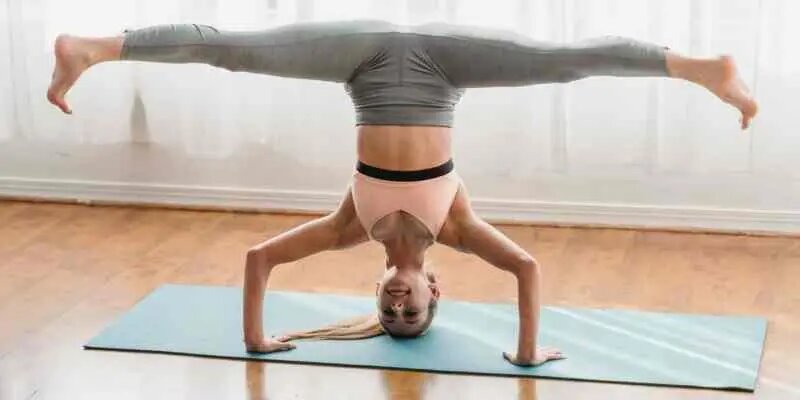Vinyasa yoga, also known as flow yoga, is a dynamic and popular style of yoga that emphasizes the seamless connection between breath and movement. It offers a transformative and holistic approach to physical and mental well-being. In this comprehensive article, we will explore the origins, principles, benefits, and key elements of vinyasa yoga, revealing why it has become a beloved practice for many around the world.
Origins and Philosophy
Vinyasa yoga traces its roots back to the ancient teachings of Hatha yoga, which emerged in India thousands of years ago. The term “vinyasa” refers to the synchronization of breath and movement, creating a continuous flow between yoga postures (asanas). This style of yoga was popularized in the 20th century by renowned yogis, including Tirumalai Krishnamacharya and his students, Pattabhi Jois and B.K.S. Iyengar.
The philosophical foundation of vinyasa yoga aligns with the broader principles of yoga, emphasizing the integration of mind, body, and spirit. It invites practitioners to cultivate self-awareness, mindfulness, and a sense of union with the present moment.
The Flowing Sequence
One of the distinctive features of vinyasa yoga is its emphasis on a flowing sequence of asanas. Unlike other styles that hold postures for an extended period, vinyasa yoga seamlessly links poses together, synchronizing each movement with a specific breath pattern. The fluidity of the practice creates a rhythmic flow that cultivates strength, flexibility, and balance.
The sequences in vinyasa yoga can be creatively crafted by instructors or follow established sequences such as the Sun Salutations (Surya Namaskar). The freedom to adapt the practice to suit individual needs and preferences is a hallmark of vinyasa yoga.
Breath and Movement Integration
Breath is the essential component that guides vinyasa yoga. Each movement is linked to a specific breath pattern, with inhalations and exhalations serving as cues for transitioning between poses. The coordination of breath and movement cultivates a deep mind-body connection, enhancing focus, concentration, and overall awareness.
The breath used in vinyasa yoga is often referred to as Ujjayi breathing, characterized by a gentle contraction of the throat, creating a soft sound similar to ocean waves. Ujjayi breathing helps to regulate and deepen the breath, generating internal heat, and providing a sense of calm and stability during the practice.
Benefits of Vinyasa Yoga
Vinyasa yoga offers a wide range of benefits for practitioners of all levels:
1. Physical Strength and Flexibility
The flowing sequences and challenging postures in vinyasa yoga build strength, endurance, and flexibility throughout the body. Regular practice can lead to improved muscle tone, increased range of motion, and enhanced body awareness.
2. Cardiovascular Health
The dynamic nature of vinyasa yoga, combined with the continuous movement and focused breath, can elevate the heart rate and promote cardiovascular fitness. It provides a cardiovascular workout that can improve stamina and promote a healthy circulatory system.
3. Stress Reduction and Mindfulness
The mindful and rhythmic nature of vinyasa yoga helps to calm the mind, reduce stress, and promote relaxation. The synchronization of breath and movement cultivates a state of present-moment awareness, allowing practitioners to find peace and clarity amidst the flow.
4. Energy and Vitality
Vinyasa yoga stimulates the body’s energy flow, known as prana or life force. The practice can help to awaken and balance this vital energy, leaving practitioners feeling invigorated, rejuvenated, and more connected to their inner vitality.
Finding Balance in Vinyasa Yoga
While vinyasa yoga offers numerous benefits, it’s important to approach the practice with balance and respect for individual limits. Here are a few key considerations:
1. Awareness and Alignmen
Maintain awareness of your body’s limitations and honor your unique physical condition. Focus on proper alignment and listen to your body’s signals to avoid injury.
2. Modifications and Props
Vinyasa yoga offers various modifications and the use of props to accommodate different levels of flexibility and strength. Embrace modifications when needed and utilize props to support and enhance your practice.
3. Breath as a Guide
Stay connected to your breath throughout the practice. Use the breath as a tool to find ease, maintain a steady rhythm, and move with intention and mindfulness.
4. Rest and Recovery
Vinyasa yoga can be physically demanding. Allow yourself time for rest and recovery, honoring the need for balance between effort and relaxation.
Conclusion
Vinyasa yoga offers a transformative and dynamic path towards physical strength, mental clarity, and inner harmony. The seamless integration of breath and movement, the flowing sequences, and the emphasis on mindfulness make vinyasa yoga a powerful practice that goes beyond the physical postures. Whether you’re seeking physical fitness, stress reduction, or a deeper connection to yourself, vinyasa yoga invites you to embrace the journey of self-discovery, balance, and well-being.



